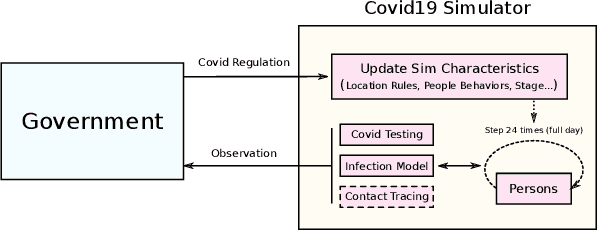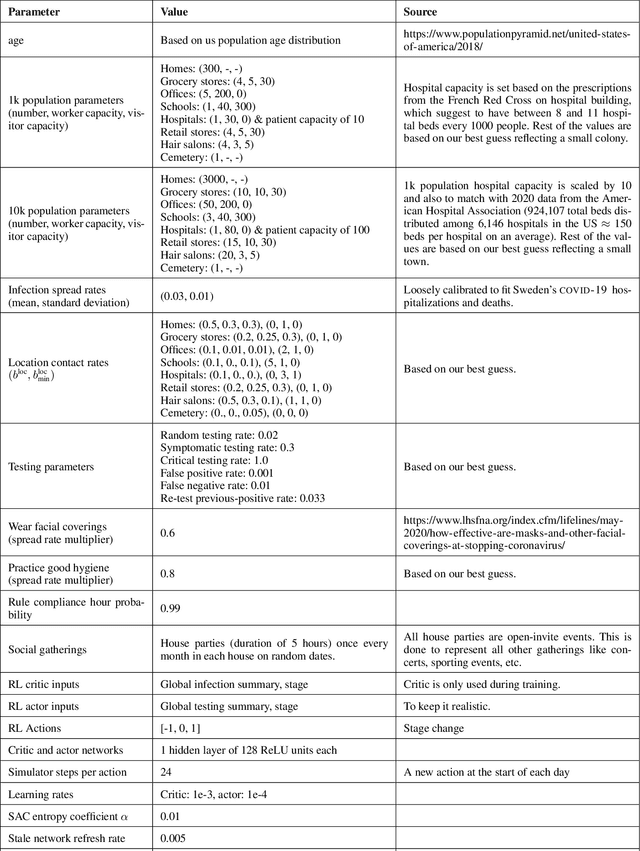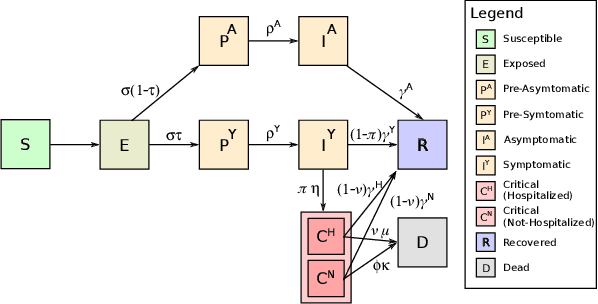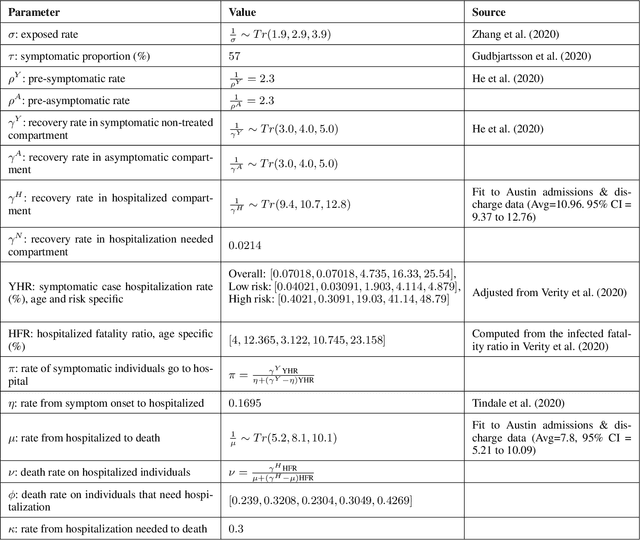Spencer Fox
Physics-informed deep learning for infectious disease forecasting
Jan 16, 2025



Abstract:Accurate forecasting of contagious illnesses has become increasingly important to public health policymaking, and better prediction could prevent the loss of millions of lives. To better prepare for future pandemics, it is essential to improve forecasting methods and capabilities. In this work, we propose a new infectious disease forecasting model based on physics-informed neural networks (PINNs), an emerging area of scientific machine learning. The proposed PINN model incorporates dynamical systems representations of disease transmission into the loss function, thereby assimilating epidemiological theory and data using neural networks (NNs). Our approach is designed to prevent model overfitting, which often occurs when training deep learning models with observation data alone. In addition, we employ an additional sub-network to account for mobility, vaccination, and other covariates that influence the transmission rate, a key parameter in the compartment model. To demonstrate the capability of the proposed model, we examine the performance of the model using state-level COVID-19 data in California. Our simulation results show that predictions of PINN model on the number of cases, deaths, and hospitalizations are consistent with existing benchmarks. In particular, the PINN model outperforms the basic NN model and naive baseline forecast. We also show that the performance of the PINN model is comparable to a sophisticated Gaussian infection state space with time dependence (GISST) forecasting model that integrates the compartment model with a data observation model and a regression model for inferring parameters in the compartment model. Nonetheless, the PINN model offers a simpler structure and is easier to implement. Our results show that the proposed forecaster could potentially serve as a new computational tool to enhance the current capacity of infectious disease forecasting.
Reinforcement Learning for Optimization of COVID-19 Mitigation policies
Oct 20, 2020



Abstract:The year 2020 has seen the COVID-19 virus lead to one of the worst global pandemics in history. As a result, governments around the world are faced with the challenge of protecting public health, while keeping the economy running to the greatest extent possible. Epidemiological models provide insight into the spread of these types of diseases and predict the effects of possible intervention policies. However, to date,the even the most data-driven intervention policies rely on heuristics. In this paper, we study how reinforcement learning (RL) can be used to optimize mitigation policies that minimize the economic impact without overwhelming the hospital capacity. Our main contributions are (1) a novel agent-based pandemic simulator which, unlike traditional models, is able to model fine-grained interactions among people at specific locations in a community; and (2) an RL-based methodology for optimizing fine-grained mitigation policies within this simulator. Our results validate both the overall simulator behavior and the learned policies under realistic conditions.
 Add to Chrome
Add to Chrome Add to Firefox
Add to Firefox Add to Edge
Add to Edge